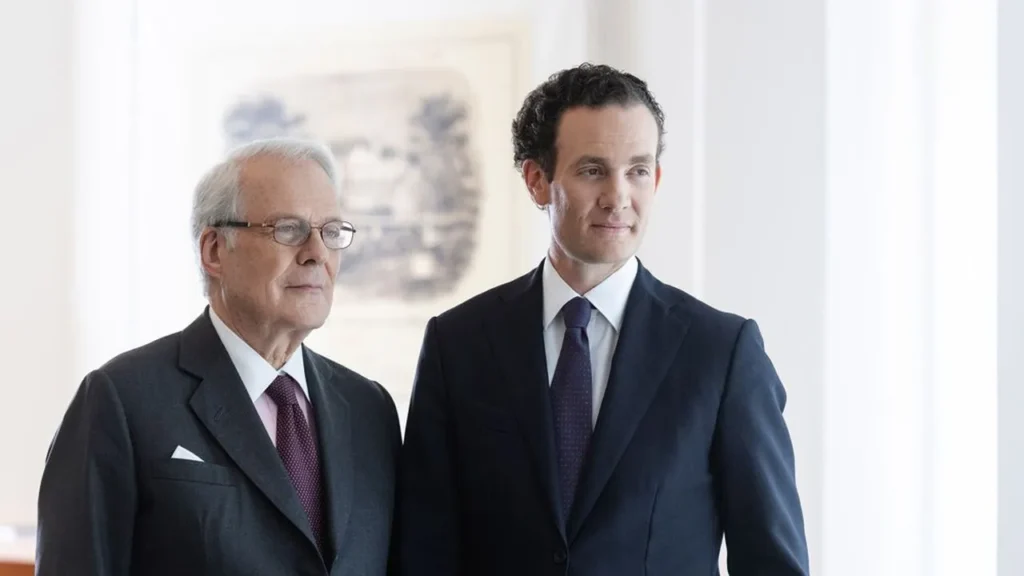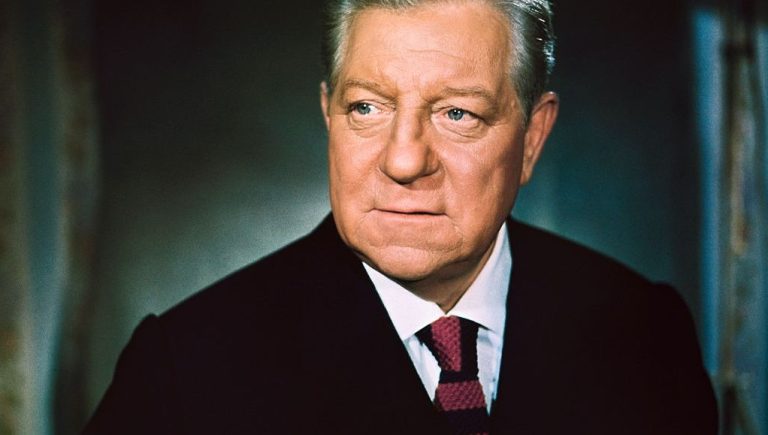Fortune of the Rothschilds: the mysterious legacy of a banking dynasty
Rothschild fortune
Rothschild family - Introduction
The Rothschild dynasty For over two centuries, the brand has been synonymous with power and wealth. Founded in the late XVIIIe centurye, this European banking family has financed empires and weathered great historical upheavals. Yet, despite their undeniable influence, the Rothschilds cultivate discretion. This contrast between worldwide renown and well-kept secrecy fuels much speculation about the true scale of their fortune. In this introduction, we delve into the fascinating history of the Rothschilds, between financial heritage and legends, to understand how one of the world's most famous families was built and passed on. family fortunes most famous - and enigmatic - in the world.

Origins of the Rothschild fortune
The story of the Rothschild fortune begins with Mayer Amschel Rothschild (1744-1812), a visionary Frankfurt banker. At the end of the 18the In the 19th century, Mayer Amschel made a name for himself as a dealer in coins and banknotes for the German nobility. His financial acumen and reputation for integrity earned him the trust of wealthy customers, including the Prince of Hesse. Looking beyond local affairs, he devised a bold family strategy: entrusting each of his five sons with the mission of expanding the banking empire into various European capitals.
At the beginning of thee century, the five Rothschild sons - often nicknamed the five arrows in reference to their family crest - set off to found banks in the major financial centers of the day. Amschel Mayer stays in Frankfurt to take over his father's bank, Salomon settles in Vienna, Carl (known as Charles) leaves for Naples, James (Jacob) sets up in Paris, and Nathan moves to London. This geographical dispersion, unprecedented at the time, created an incredibly efficient international banking network. The brothers were in constant communication with each other, exchanging information and capital faster than their competitors, thanks to a highly efficient system of messengers and private couriers.
This coordinated expansion enabled the Rothschilds to take advantage of business opportunities throughout Europe. During the Napoleonic Wars, for example, Nathan in London used information passed on early by his brothers to invest shrewdly in British government bonds. A famous anecdote recounts that after the Battle of Waterloo in 1815, Nathan Rothschild, having received the news of victory faster than anyone else, took advantage of this advance of information to pull off a spectacular financial coup on the London Stock Exchange. Whether true or embellished by legend, this story illustrates the power of the Rothschild network.

Throughout the 19th centurye century, the family financed major national projects: the purchase of the Suez Canal by the British, the development of railroads across Europe, and mining operations such as the Rio Tinto in Spain, and investments in diamonds in South Africa with De Beers. Thanks to these colossal operations, the Rothschilds accumulated unprecedented wealth, to the point where they were often considered the wealthiest family in the world in the 19th century.e century.
Current estimate of their wealth
Today, when talking about the Rothschild fortune, it's important to remember that the family is no longer a single financial entity. Over the generations, the family line has branched out into numerous branches across Europe (mainly in France, Great Britain, Switzerland and Austria). Each manages its own assets and investments. What's more, most Rothschild companies are privately held, which makes any financial valuation a delicate matter. Unlike modern technology tycoons whose wealth is clearly valued on the stock market, the Rothschild fortune is scattered across family holdings and diversified, often unlisted, assets.
Estimates of family wealth vary enormously from one source to another - a sign of the halo of mystery that surrounds their assets. Some extravagant speculations estimates put the combined wealth of all family members over several generations at astronomical sums, in the order of more than $15,000 billion (15 trillion). However, these figures, fuelled by conspiracy theories, have no official confirmation and are more myth than reality.

On the other hand, more conservative valuations focus on the most visible branches of the family. For example, a British report from 2023 (Sunday Times Rich List) estimated the fortune of the London-based Rothschild branch at approximately $1 billion only, which seems modest considering the name's renown.
The truth probably lies somewhere between these extremes. It is virtually impossible to give an exact figure for the global Rothschild fortune today. Nevertheless, it's safe to say that it runs into the billions (in dollars or euros), divided between various family members and entities. Each branch holds specific assets: investment banks, wealth management companies, prestigious vineyards, works of art, real estate, and so on. Thus, no list of the world's great fortunes can truly reflect the total financial weight of the Rothschild dynasty, as this weight is diffuse and protected by the private nature of their business.
The Rothschilds' areas of investment
While the Rothschild family initially built its empire in the banking and financeSince then, it has diversified its investments across a wide range of sectors, contributing to its enduring wealth. Here are the main areas of activity and investment associated with the Rothschilds:
- Banking and finance : The historic core of the Rothschild fortune remains investment banking and wealth management. The company's Rothschild & Cowhich has its origins in the Paris and London banks of the 19th century.e century, is still a major player today. It advises governments and companies on mergers and acquisitions, and manages assets for wealthy clients worldwide. In 2023, the family has decided to take Rothschild & Co off the stock market by buying back all its shares, demonstrating its determination to maintain family control and total discretion over its operations. At the same time, another branch manages the Edmond de Rothschild Groupbased in Switzerland, specializing in private banking and asset management. These family-owned financial entities carry on the banking heritage by adapting it to the needs of the 21st century.e century.
- Exceptional vineyards and wines The Rothschild name is also associated with some of the world's most renowned wineries. Two Bordeaux châteaux, symbols of excellence, have belonged to the family since the 19th century.e century. On the one hand, the Château Mouton Rothschild (acquired in 1853 by Nathaniel de Rothschild) and on the other, the Château Lafite Rothschild (acquired in 1868 by James de Rothschild). These two crus classés produce prestigious wines, prized by collectors and connoisseurs alike, and contribute to the Rothschilds' heritage and visibility far beyond the financial sphere. Over the years, the family has extended its winegrowing interests to other parts of the world, investing in vineyards in Chile, Argentina or Californiareinforcing its footprint in the luxury wine industry.
- Prestige real estate : Like all wealthy dynasties, the Rothschilds own sumptuous estates. Historically, they have built large mansions and hôtels particuliers in Europe, some of which have become famous for their architecture and art collections (such as Waddesdon Manor in England or the Hôtel de Marigny in Paris, formerly a Rothschild residence). In addition to these historic residences, the family invests in investment real estate: office buildings, stakes in urban real estate projects, luxury resorts... Today, part of their real estate portfolio is managed via family funds and companies, often with the utmost discretion.
- Energy, mining and infrastructure : True to their tradition of strategic investment, the Rothschilds have participated, directly or indirectly, in key sectors of the real economy. Historically, they financed the rise of the railroads, the extraction of raw materials (ores, oil) and energy companies. Nowadays, through investment funds or affiliated companies, certain branches of the family commit capital in infrastructures (e.g. freeway, rail or public facilities projects) and in theenergy. Whether through oil investments in the Middle East in the twentieth centurye Since the beginning of the 20th century, and more recently in renewable energies, the family has adapted its portfolio to the major industrial trends in order to grow its capital.
- Arts and collections Although not a productive investment in the strict sense, it is worth mentioning the Rothschilds' passion for the arts and antiquesbecause it also reflects their wealth. Since the XIXe In the 19th century, several members of the family built up immense art collections (master paintings, rare pieces of furniture, jewelry, precious manuscripts). Some of these treasures have been bequeathed to museums or foundations, but occasional auctions of Rothschild collections bear witness to the values at stake. Art is a status symbol, a source of personal pleasure, and a valuable asset in the management of the family estate.

Thanks to this diversification into banking, wine, real estate, industry and art, the Rothschild family has been able to preserve and grow its wealth over many generations. Their multi-faceted portfolio not only provides them with a varied income, but also influence in various sectors of the global economy.
Economic impact and influence
It is difficult to overestimate the historic impact of the Rothschilds on the world economy. In the nineteenthe century, when states were struggling to finance themselves on the nascent markets, the Rothschilds became the government bankers. They lent money to crowns and nations to wage wars, build rail networks and develop national industries.
Their influence was such that a 19th-century French authore century declared: "There are two powers in Europe: the power of Napoleon and the power of the Rothschilds." Without going to these extremes, it is a fact that the family played a key role in major financial events. For example, in 1875, it was London's Rothschild bank that facilitated the British government's acquisition of shares in the Suez Canal, thus consolidating the British colonial empire. Similarly, the Rothschilds helped to stabilize struggling economies by orchestrating international loans, becoming a pillar of the financial system of the time.

In the XXth centurye The Rothschilds' influence had to adapt to a changing world. Two world wars affected their activities (the Austrian branch was despoiled by the Nazi regime, and the French branch had to rebuild after the war). Yet the family bounced back by refocusing their influence on modern financial services, such as M&A advisory and wealth management, rather than on huge state loans. Their bank participated in major financial operations at the end of the XXe century, such as massive privatizations in Europe and major industrial mergers. In these hushed circles of high finance, the Rothschild name still opens many doors.
However, theglobal economic trends saw the emergence of new financial powers. In the 21ste In the 21st century, tech multinationals, Middle Eastern sovereign wealth funds and other billionaire families (such as the Waltons, the Marses or the Ambanis) have fortunes easily surpassing those of individual Rothschilds. The influence of the Rothschild dynasty, while still present in investment banking and business, has become more discreet and diffuse. It is exercised behind the scenes, through strategic advice, co-investments and networks of influence, rather than through direct, visible control of the economy.

Despite this relative media retreat, the Rothschilds continue to embody a certain transgenerational financial power. They sit on boards of directors, participate in international think-tanks and maintain an extensive network of contacts with the political and economic elite. The very fact that their name has given rise to so many myths is revealing: in the collective imagination, the Rothschilds still symbolize international high finance. Their real influence today is less dominant than in the past, but it remains real, nurtured by the of their family businesses and their ability to blend into the landscape of new fortunes without losing their heritage.
Summary
The Rothschild fortune has fascinated and fuelled speculation for over two centuries. Founded by Mayer Amschel Rothschild in the 18th century, this banking dynasty made its mark thanks to a financial network that was unique in Europe. Investing in banking, wine, real estate and industry, the Rothschilds amassed considerable wealth, albeit difficult to assess today. Between legend and reality, their fortune remains a mystery, maintained by family discretion. While their economic power may have evolved, their influence in high finance remains undeniable, perpetuating the legacy of one of history's most enigmatic families.
FAQ about the Rothschild fortune
What exactly is the Rothschild fortune?
There is no precise public consensus on the exact size of the Rothschild fortune. The family is large and divided into several branches, each holding its own assets. Unlike an individual billionaire whose fortune can be estimated via the stock market value of his companies, the Rothschilds' wealth is spread across multiple private holdings, properties and investments. Some wild estimates put the figure in the trillions, but these are unfounded. In reality, if we add up the different wealth holdings of the various members of the dynasty, we probably obtain several billion of euros or dollars, but not to the point of appearing at the top of contemporary world rankings.
Why is it so difficult to estimate their wealth?
The main difficulty comes from the financial discretion of the family. Numerous Rothschild companies (banks, investment funds, winegrowing companies, etc.) are also part of the Rothschild family. unlistedThis prevents any transparent assessment of their value. In addition, wealth is divided among numerous heirs and managed through family trusts and international private structures.
Each branch (French, British, Swiss...) manages its assets independently. With no public accountability, the Rothschilds have no reason to reveal the extent of their assets. Finally, the very notion of the "Rothschild fortune" is complex: are we talking about a global family fortune (cumulating all members over several generations) or the wealth of a few individuals bearing this name today? For all these reasons, the estimate is risky and imprecise.
What are their main investments today?
Today, the Rothschilds concentrate their investments in banking and international finance through Rothschild & Co and the Edmond de Rothschild Group, which offer investment banking, financial advisory and wealth management services. They also have a strong presence in the luxury wine sectorwith renowned estates such as Château Lafite Rothschild and Château Mouton Rothschild, as well as other vineyards in the New World.
In addition, the family owns property assets and invests via various funds in projects in theinfrastructure, energy and sometimes new technologies alongside other partners. Finally, some members are involved in charitable or cultural causes, funding foundations, museums and philanthropic projects - an investment of influence rather than profit, but consistent with their historic role as patrons.
Do they still have dominant economic power?
The Rothschilds retain a significant influence, but can no longer be described as a "dominant power" in the sense that they might have been in the 19th century.e century. At that time, their ability to lend to nations and finance gigantic projects placed them at the top of the financial hierarchy. Today, the global economy has expanded enormously, and other colossal players have emerged (tech giants, global investment funds, other wealthy families on other continents).
The Rothschild family no longer exercises hegemonic controlBut they remain influential in their chosen field of finance. Their bank continues to advise on major transactions, and their name remains a byword in business circles. In short, the Rothschilds still carry weight, but they are now one of the many great fortunes participating in the global economy, rather than a solitary power reigning over international finance.







